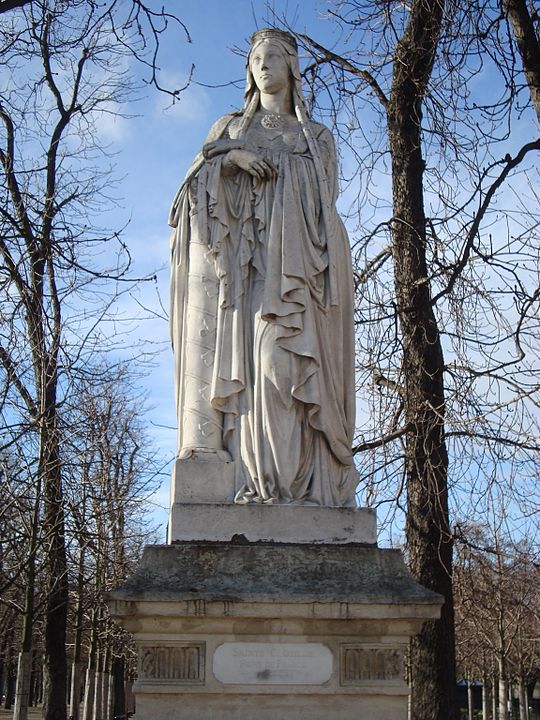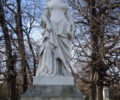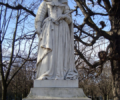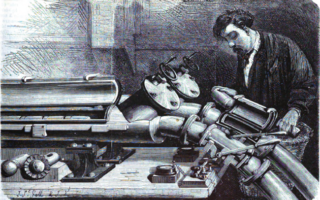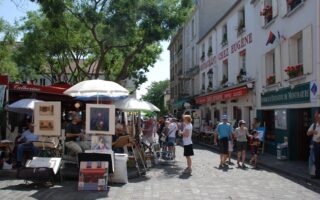Poppy in Paris: A March Tribute to the City’s Women
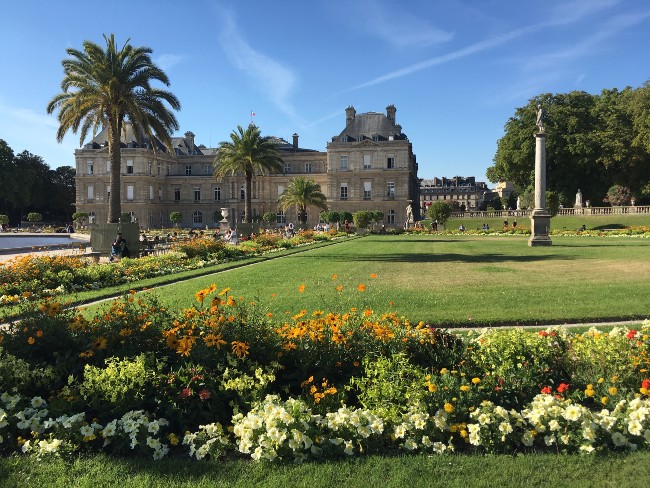
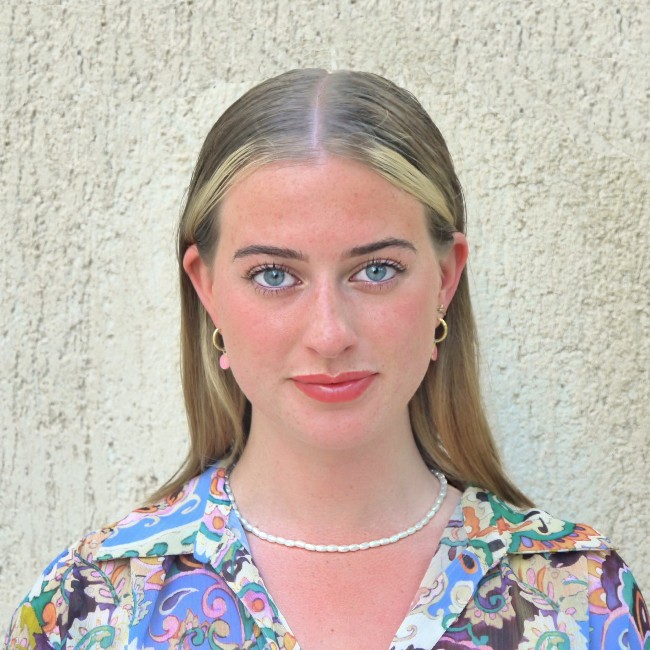
- SUBSCRIBE
- ALREADY SUBSCRIBED?
BECOME A BONJOUR PARIS MEMBER
Gain full access to our collection of over 5,000 articles and bring the City of Light into your life. Just 60 USD per year.
Find out why you should become a member here.
Sign in
Fill in your credentials below.
Working as an au pair in Paris, Poppy Pearce explores the city in her free time. She documents her favorite finds – exhibitions, restaurants, boutiques, day trips – in an exclusive Bonjour Paris column. Find previous editions here.
Earlier this month, on March 8th, International Women’s Day was celebrated all over the globe. French feminism, which has its roots in the French Revolution, has had a significant impact on the rights of women in the 20th century, particularly via the writings of Simone de Beauvoir. And so I thought it was only right to theme this month’s column in tribute to the women of Paris. Several places I highlight below are found in the Latin Quarter, as it is here where women’s history and influence has become particularly apparent.
View this post on Instagram
Restaurant of the month:
Bichettes
11 Rue Marie et Louise, 10th
Tuesday to Saturday 12 p.m. – 2 p.m. and 7 p.m. – 11 p.m.
Sunday 12 p.m. – 2 p.m.
Nearest Metro: Jacques Bonsergent (line 5), Goncourt (line 11)
60% of the streets in France are named after men and only 6% after women. In Paris, this statistic is even more measly at 2%. Rue Marie et Louise is one street in Paris that contributes to this 2%, and it is on this road that you will find my restaurant of the month, Bichettes, meaning “does” (or female deers) in French.
This restaurant isn’t just an homage to women, situated on one of the few Paris streets named for a woman, it’s also run by women.
Just around the corner from Canal Saint Martin, Bichettes occupies number 11 Rue Marie et Louise and is a unique restaurant with a fantastic concept. Agathe Fondeville and Hortense Hérisson, two friends who met at Ecole Hôtelière de Lausanne in 2012, decided to launch a restaurant that pays tribute to grandmothers. And so, Bichettes presents a reminiscent reimagination of the food lovingly cooked by grandmothers all over France.
View this post on Instagram
The food at Bichettes is delicious and crafted with care, which leaves you feeling warm and comforted. The recipes include seasonal produce sourced from neighborhood merchants, making this restaurant a sustainable and eco-conscious venue. The menu offers many smaller plates for guests to share, which further encourages a sociable, relaxed, and friendly atmosphere. Expect savory dishes such as “Granny’s Lasagne” and “Onion Tarte Tatin” with honey, soy, and thyme, and desserts such as “Beautiful Hélène Pear” with chocolate and Chantilly cream.
The decor exudes nostalgia, with the interior replicating a family dining room with raw wood tables and dried flowers, and the food being served on mismatched china plates. Downstairs you’ll find Grandpa’s secret cellar, stocked with a large range of 100% French organic, biodynamic, and natural wines to further warm your stomach. All of these elements – the food, the ambiance, the interiors – combine to transport you to fond memories of weekends spent with grandparents.
View this post on Instagram
Café of the month:
Chez Mona
9 Rue de Vaugirard, 6th
Thursday to Friday 9 a.m. – 8 p.m.
Saturday and Sunday 11 a.m. – 8 p.m.
Metro: Odéon (lines 4 and 10), Luxembourg (RER B)
Chez Mona is a female-led café and association that offers a calm, safe, and nurturing space for women. This spot is a heavenly haven in the heart of the 6th, where you can sit and sip, meet friends, or work on a project.
View this post on Instagram
Chez Mona occupies the ground floor of Cité Audacieuse, a building in which companies that work to advance women’s rights can occupy office spaces on the above floors. The maxim of this ecosystem is fitting: “Liberty, Equality, Sorority”, a feminist take on the national motto of France. The venue itself is a former school that has been converted into a colorful and vibrant loft. In fact, the old hopscotch played by the children is still visible in the central courtyard. The space is quiet and soothing, and the staff are always warm and welcoming. And men, don’t worry, although this is a space dedicated to women, you are also just as welcome.
The furniture within the café can seat up to 50 people and is loaned by a sustainable interiors company called Vitra. Around the café, you will find artwork that has drawn inspiration from strong female figures. These finer furnishings are supplied through Mona’s partnership with Made.com, a partnership that combines furniture and artwork with issues of gender equality and systemic violence against women.
View this post on Instagram
The mission of Mona is to create a stimulating and open-minded space in which ideas can be exchanged, opinions can be shared, energy can be created, and lessons can be learned. To aid in this mission, Mona has a fantastic monthly program alongside the café which includes events such as book releases, conferences, comedy festivals, vigils, and yoga classes, all led by women.
Whether you are looking for a coffee or a lunch, a place to relax and meet with friends, or a place to work independently or collaboratively, Chez Mona should be added to your “to-go” list.
Exhibition of the month:
Permanent Exhibition at Musée Curie
1 Rue Pierre et Marie Curie, 5th
Monday to Friday – 9:30 a.m. to 12 p.m. and 1 p.m. to 5 p.m.
Metro: Place Monge (line 7), Cardinal Lemoine (line 10), Luxembourg (RER B)
My exhibition of the month is the permanent exhibition displayed at Musée Curie. This retrospective showcases the extraordinary life and work of one of the world’s most inspirational women, Marie Curie.
On the 7th of November 1867, Marie Skłodowska was born to a large family in Warsaw, Poland. This little girl, encouraged by her passionate family of well-educated teachers, was very successful in her academia at school and dreamed of furthering her education in science. However, at this time, Warsaw was under occupation by czarist Russia and the universities in the city did not accept women. So, she traveled with her sister to Paris, and in October 1891 she enrolled at Sorbonne University. After her studies, where she received two degrees with honors, Marie met her husband Pierre Curie and together they discovered two new elements, polonium and radium, and subsequently the ability to use radioactivity as a force for good in the treatment of cancer.
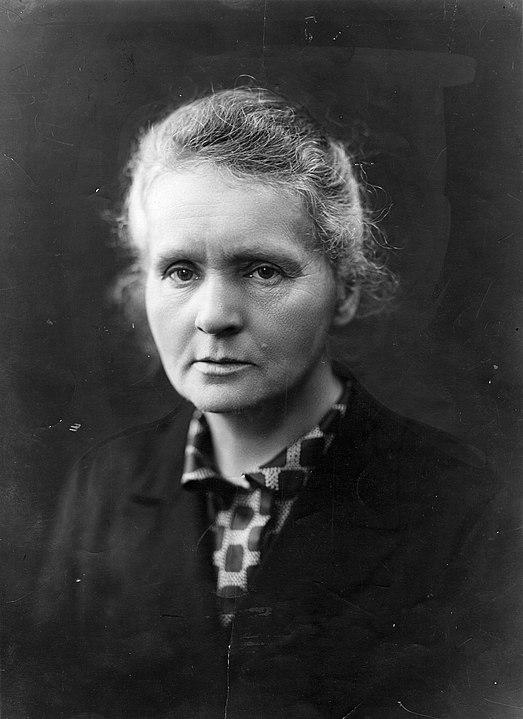
Marie Curie. (C) Henri Manuel, Public Domain
Marie Curie was a trail-blazing scientist who was the first woman to win a Nobel Prize, the first person to win two Nobel Prizes, and the first person to win a Nobel prize in two separate scientific fields. She passionately maintained that science plays a crucial part in society’s development and she valued her role as a symbol of female emancipation.
The museum’s permanent exhibition is the perfect tribute to Marie and educates the visitor through four main themes. The first theme is that of her family, a family that has an astonishing five Nobel Peace Prizes to their name. Secondly, the exhibition highlights the myths and truths about radium, the heart of her work. Moving forward, the next section focuses on the laboratory that she opened and directed in the 1930s. And finally, the exhibition presents the launch of The Curie Foundation, created by Marie and her husband as a dispensary to treat cancer patients, and the continued work of this institute today.
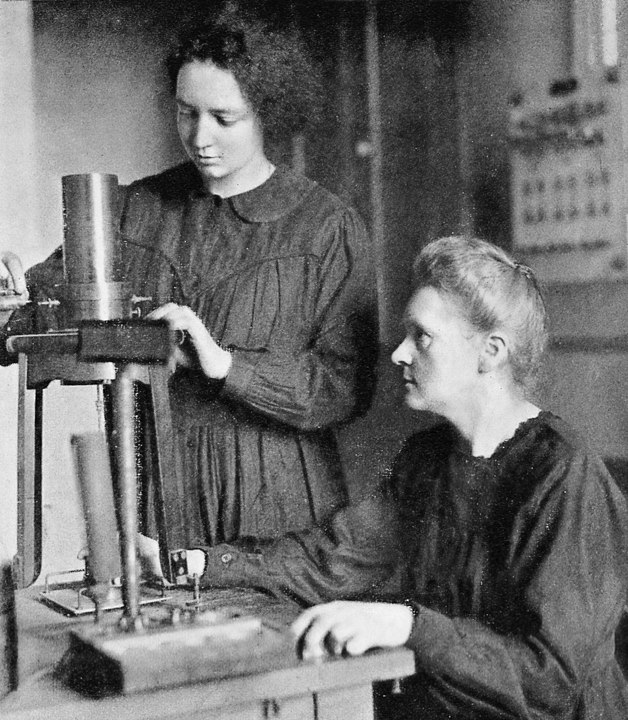
Marie and daughter Irène, 1925. Wikimedia Commons
Marie died of pernicious anemia on July 4, 1934, and her ashes, alongside those of her husband Pierre, were placed in the crypt of the Panthéon to honor the impact of their work not just on French society but also the world. Marie is one of only six women to be buried in the Panthéon, compared to her husband, one of 75 men. I would also recommend a trip to the crypt of the Panthéon to view the tomb and to learn more about her life.
Day trip of the month:
Orléans
Accessible via a one-hour TER train journey from Gare d’Austerlitz to Orléans Station.

The Loire as it flows through Orléans. Credit: Nono vlf / Wikimedia Commons
Let me take you back to the year 1428 when the nation of France was facing severe pressure from the advancing English army. The English were heading south and the threat of a defeat was imminent. The situation appeared dire for the French until a 16-year-old girl came to lead their army.
A peasant girl in medieval France named Joan of Arc began to hear God’s voice speak to her when she was only 13, instructing her to lead France to glory against the English. Despite having no prior military experience, Joan persuaded Charles of Valois, the crown prince, to let her command the French army to the beleaguered city of Orléans, where they won spectacularly in what became the pinnacle point of the Hundred Years’ War.
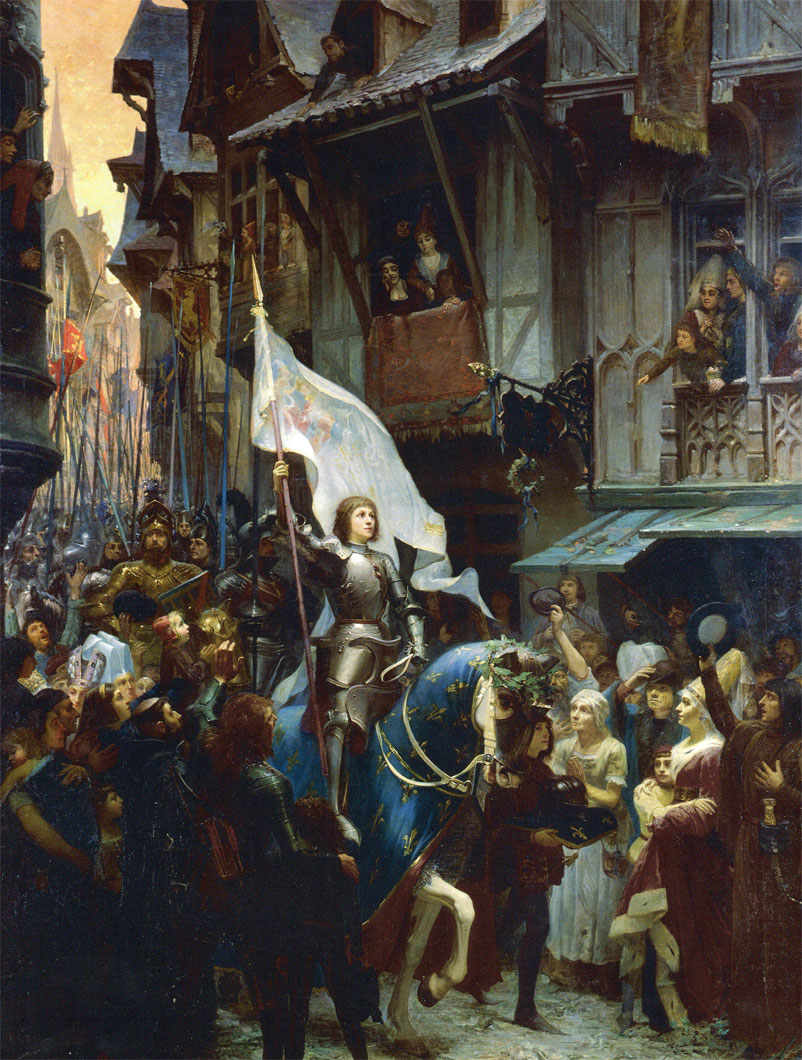
Joan of Arc enters Orléans by Jean-Jacques Scherrer (1887), Musée des Beaux-Arts d’Orléans. Public domain
At the age of 19, Joan was arrested by hostile troops after witnessing the coronation of the prince as King Charles VII, convicted for witchcraft, and burnt at the stake. Joan of Arc was posthumously rewarded for her role in defending the country by being named a patron saint of France and since, has been regarded as one of history’s greatest martyrs.
So my day trip of the month is a visit to the famed city of Orleans, only a pleasant one-hour train journey from Gare d’Austerlitz, Paris.
Orleans is celebrated as a city of victory and hope, thanks to the brave Joan of Arc. The Maison de Jeanne d’Arc, a recreation of the residence where she remained throughout the conflict, is located at 3 Place du Général de Gaulle and presents multimedia displays commemorating her life. In the center of Place du Martroi, the historical city square, also stands an impressive statue of Joan of Arc designed by sculptor Edmer-François-Étienne Gois. This square is a great location to drink a coffee and people watch on one of the terraces overlooking the hustle and bustle of the city.

Statue of Jeanne d’Arc in Orléans, France. Photo credit: Wouter Hagens / Wikimedia Commons
Not only can you spend the day walking in the footsteps of the patron saint of France, but you can also explore a stunning Gothic cathedral, a museum of fine arts and natural sciences, the botanical garden of Jardin des Plantes, the beautifully well-kept Parc Pasteur, and the Loire River.
This is the perfect day trip for anyone looking to immerse themselves in history, soak up the grand architecture of medieval France, and pay their respects to the great Joan of Arc.
Hidden gem of the month:
The 20 Queens of Jardin du Luxembourg (Serie des Reines et Femmes Illustres)
Jardin du Luxembourg, 6th
Public transport: Luxembourg (RER B)
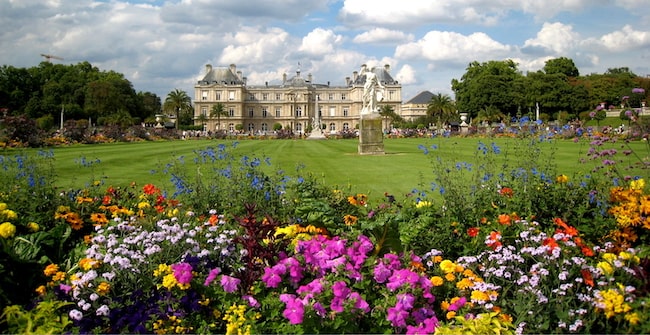
Jardin du Luxembourg. Photo credit: Rdevany/ Wikimedia commons
Though the Jardin du Luxembourg is certainly not a hidden gem, it is the 20 marble sculptures – situated around the pond and central garden facing the Luxembourg Palace – that I want to feature in this month’s column.
These sculptures, known in French as the Serie des Reines et Femmes Illustres, were commissioned by King Louis-Philippe of France to recognize 20 inspiring queens, duchesses, and patron saints, who made France the country it is today. This series materialized as a female version of Les Hommes Illustres, a sequence of 86 male statues on the wings of the Napoléon Court within the exterior of the Louvre Palace.
Between 1843 and 1846, France’s most renowned sculptors of the time were enlisted to complete the project. No two statues are made by the same sculptor, meaning each woman is represented in a different style which makes for an interesting inspection. Each sculpture varies in height from 2.3 to 3.8 meters and stands on a stone plinth with a plaque bearing the subject’s name, virtues, and dates of birth and death.
The only original sculpture not to be displayed within the garden is François Rude’s depiction of Joan of Arc. This statue was considered too fragile to face the elements, and so was transferred into the Louvre museum in 1872.
To marvel at these marble women frozen in time, you can begin your tour at Saint Clotilde to the west of the palace. Follow the statues anti-clockwise around the inner courtyard, and you will come across the representations in stone of the following women:
- Saint Clotilde (465-545), Queen of France
- Marguerite de Provence (1219-1295), Queen of France
- Anne de Bretagne (1477-1514), Queen of France
- Anne d’Autriche (1601-1666), Queen of France
- Blanche de Castille (1188-1252), Queen of France
- Anne de Beaujeu (1460-1522), Regent of France
- Valentine de Milan (1370-1408), Duchess of Orléans
- Marguerite de Valois (1492-1549), Queen of Navarre
- Marie de Médicis (1573-1642), Queen of France
- Laure de Noves (1307–1348), Wife of Count Hugues de Sade, an ancestor of Marquis de Sade
- Saint Bathilde (630-680), Queen of France
- Berthe (720-783), Queen of France
- Mathilde (1031-1083), Duchess of Normandy
- Sainte Geneviève (423-512), Patroness of Paris
- Marie Stuart (1542-1587), Queen of France
- Jeanne d’Albret (1528-1572), Queen of Navarre
- Clémence Isaure (? – ?), Founder of the Académie des Jeux floraux
- Anne Marie Louise d’Orléans (1627-1693), Duchess of Montpensier
- Louise de Savoie (1476-1531), Regent of France
- Marguerite d’Anjou (1429-1482), Queen of England
Lead photo credit : Jardin du Luxembourg. Photo credit: Bonjour Paris
More in anne d'autriche, anne de beaujeu, anne de bretagne, Anne Marie Louise d’Orléans, Berthe, bichettes, blanche de castille, Cafe, Clémence Isaure, feminism, food, French feminists, international womans day, Jardin du Luxembourg, Jeanne d’Albret, Joan of Arc, Laure de Noves, Louise de Savoie, Marguerite d’Anjou, marguerite de provence, marguerite de valois, marie curie, Marie de Médicis, Marie Stuart, Mathilde, musee curie, Orleans, Poppy in Paris, queens, Saint Bathilde, saint clotilde, Sainte Geneviève, valentine de milan, women in history
